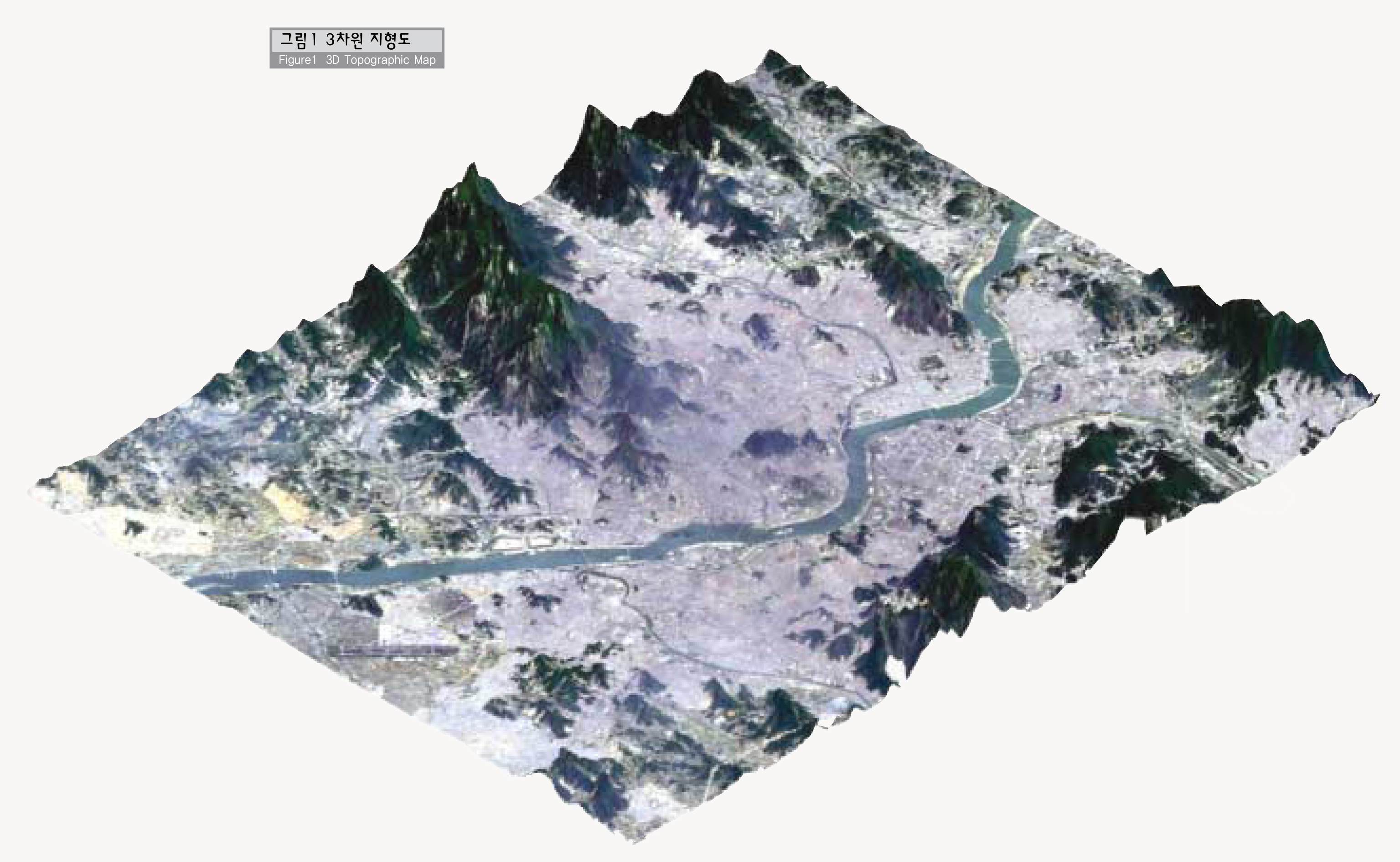-
자연
지형
-
지형
서울은 산악에 둘러싸인 분지지형을 이루고 있다. 강북의 중앙에는 동서남북에 각각 낙산(111m), 인왕산(338m), 남산(262m), 북악산(342m)이 있고, 이 내부 분지는 조선시대에 궁궐과 한성부의 주요기능이 위치하였던 곳이다. 행정경계를 중심으로 북쪽으로는 북한산(837m), 도봉산(740m), 동북쪽으로는 수락산(638m), 불암산(508m), 남쪽으로는 관악산(629m)과 청계산(493m)이 경기도와 경계를 이루며, 이 산악지형 사이를 한강이 동서로 흐르고 있다. 그리고 이들 산지 사이를 한강의 지류인 청계천, 중랑천, 불광천, 안양천, 탄천, 양재천 등이 흐르고 있다.
Topography
Seoul is a basin surrounded by mountains. Mt.Naksan (111m), Mt.Inwangsan (338m), Mt.Namsan (262m), and Puaksan (342m) are in the east, west, south and north respectively to the center of the downtown area, and are within the mountain areas were the royal palaces of the Choson Dynasty and major functions of Hansong-bu (old name of Seoul) are located. They are bordering on the Kyonggi-do province with Mt. Pukhansan (837m) and Mt. Tobongsan (740m) to the north, Mt. Suraksan (638m) and Mt. Pulamsan (508m) to the northeast, Mt.Kwanaksan (629m) and Mt.CHonggyesan (493m) to the south, and the Hangang River runs from east to west between the mountains. Also between the mountains, there runs the Chonggyechon stream, Chungnangchon, Pulgwangchon, Anyangchon, Tanchon, and Yangjaechon, these are tributaries of the Hangang.
출처 : 국립지리원, 1:1000 수치지형도


